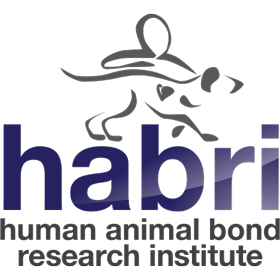Principal Investigator
Rationale
There is an increasing consensus that there are benefits from contact and connection with animals. However, increasing the understanding of what factors influence AAI session success is at the forefront of scientific investigation. This study aims to provide empirical data on how to improve outcomes of AAI sessions. Specifically, the study focuses on one largely neglected area, namely how the owner-handler of the therapy dogs interacts with their own dog in the session, and subsequently influences the dog’s behavior and the therapeutic effect of the session. By targeting handler behavior and manipulating factors such as leash restriction and food delivery, the researchers will provide meaningful evidence that can push the field of AAI further forward and create better session outcomes for many different populations while highlighting the wellbeing of the therapy dog.
Objective
In this experiment, the researchers aim to determine how different handler styles influence stress behavior, affiliative behavior, and salivary cortisol levels of both child and dog during AAI sessions. In addition, the researchers aim to determine if the therapeutic effect for the child is altered by different dog handling procedures.
Hypothesis
The researchers hypothesize that the handler’s interaction will influence the behavior and stress hormone level of both the dog and the child during AAI sessions. Specifically, it is predicted that the most restrictive form of handling will result in lowest therapeutic benefit. Additionally, researchers hypothesize that the most restrictive form of handling will lead to compromised welfare for the dog
Design
A within-subject group design with repeated measures will be used to determine the outcomes of typically-employed handler styles. Each child will be randomly matched with a unique therapy dog and will experience three conditions: (1) passive, (2) restrictive, and (3) treat-based handling. In each of the three conditions, handlers will alter their interactions with their dog by (1) passively sitting next to the dog with a relaxed leash with no physical contact between the owner and dog, (2) physically prompting the dog to be in continuous proximity to the child and in a down position through a tight short leash as well as physical guiding, and (3) prompting the dog to be in continuous proximity to the child and in a down position through continuous treat delivery. Investigations of effects of these common handling styles will be through behavioral observations using the validated OHAIRE-V3 coding system and salivary cortisol measures. Researchers will incorporate validated behavioral coding to measure stress behavior, affiliative behavior, and social behavior of the child and dog during a 10 min session. Salivary cortisol will be collected pre- and post- (15 min after the session end) session from both child and dog. For this experiment, researchers will recruit 21 Pet Partners therapy dog teams and 21 children with ASD. Each child-dog dyad will experience the three different handler styles in a randomized order of conditions to statistically control for order effects.
Expected Results
Researchers expect that the most restrictive handling of the therapy dogs will have negative effects for both dogs and children with ASD. They predict that restrictive handling will result in less therapeutic benefit of the dog for the child as measured by behavioral coding and salivary cortisol. It is also predicted that restrictive handling will result in increased stress and salivary cortisol concentration of the dogs. The data will contribute to the development of best-practices for conducting AAI sessions with therapy dogs and children with ASD.
Acknowledgements
This project was made possible with the generous support of Pet Partners.





